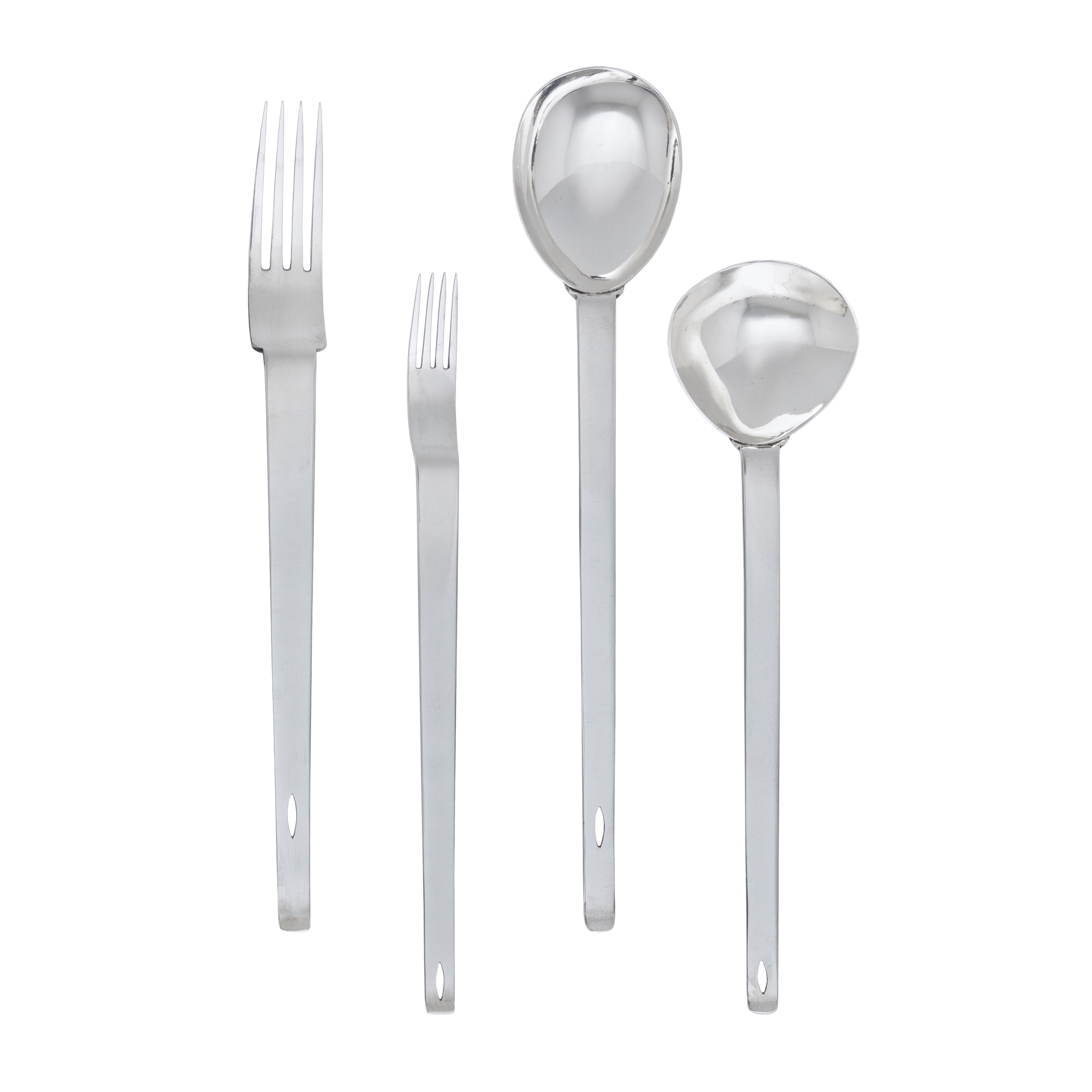CHARLES RENNIE MACKINTOSH (1868-1928) ‡
SUITE OF CUTLERY, 1902
Estimate: £20,000 - £30,000
Auction: Day Two | Lots 253 to 490 | Thursday 17th April from 10am
Description
silver, comprising; A SINGLE SOUP SPOON, with deep almost circular bowl and with incised heel, pierced terminal, 26.7cm long; A SINGLE DESSERT SPOON, with deeper bowl and with incised heel, pierced terminal, 23.3cm long; A SINGLE DINNER FORK, with four prongs, pierced terminal, 26cm long; and A SINGLE DESSERT FORK, with four prongs, pierced terminal, 23cm long, each with maker’s mark DWH (David W. Hislop), hallmarked Glasgow 1902 (4)
Provenance
Provenance: Fra H. Newbery and Jessie Newbery
Elsie Newbery and by family descent
Barclay Lennie Fine Art, Glasgow
Donald & Eleanor Taffner, New York
Lyon & Turnbull, Edinburgh The Taffner Collection, 7 September 2012, lot 23
Private European collection
Footnote
Literature: Howarth T. Charles Rennie Mackintosh and the Modern Movement, New York, 1953, pl. 50
Neuwirth W. Josef Hoffmann: Cutlery for the Wiener Werkstätte, Vienna 1982, p. 30
Mackintosh was commissioned in 1902 by Jessie and Francis (Fra) Newbery to create an elegant table set for 12 people. Fra Newbery, then director of the Glasgow School of Art, was a strong supporter of Mackintosh’s work and played a crucial role in promoting his career. His wife, Jessie Newbery, was an accomplished embroiderer and influential figure in the Arts & Crafts movement. Their long-standing friendship with Mackintosh and his wife, Margaret Macdonald, fostered many creative collaborations.
The commissioned cutlery set included a soup spoon, dessert spoon, dinner fork, and dessert fork. The order was placed through the Glasgow jeweller Edwards & Company and was executed by David W. Hislop, a skilled silversmith who had previously worked with Mackintosh on various projects. The cutlery set was later divided between the Newberys' daughters, Mary and Elsie. Over time, Mary’s pieces were sold separately between 1970 and 1980.
Mackintosh’s cutlery design is revolutionary in its form. The spoons and forks feature exceptionally long, slender handles with a distinctive longitudinal oval opening. The forks are particularly striking, as the transition between the handle and the bowl was seamless, creating the illusion of a single, continuous band of metal. On the back, the bowls (except for the dessert fork) have a rectangular support with vertical embossing. The design anticipates Josef Hoffmann’s 1903 flaches Modell (flat model) cutlery, which was later showcased at the 1906 Wiener Werkstätte exhibition Der gedeckte Tisch (The Laid Table).

